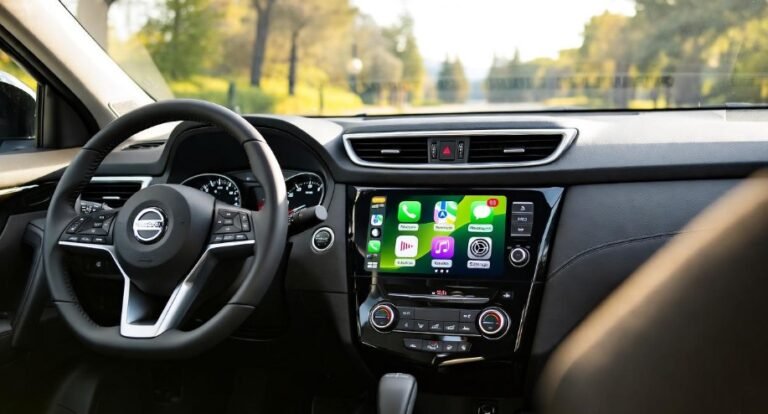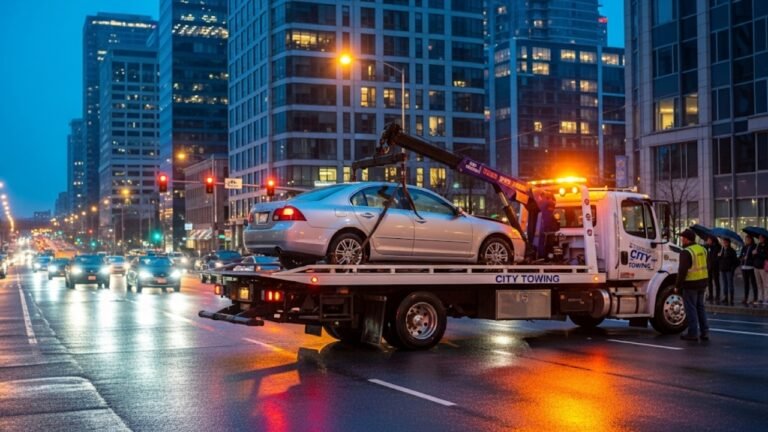AS 1 Line: What Every Car Owner Needs to Know for Safety

Have you ever noticed a thin, almost subtle line running across your car’s windshield? If you haven’t paid close attention, it’s easy to overlook. But this line, called the AS 1 line, is far more than a simple design feature. It plays a crucial role in your safety while driving. In essence, the AS 1 line acts as a reference point for the proper installation of your car’s windshield and ensures that critical safety systems, like airbags, work exactly as intended. Think of it as an invisible guide that quietly keeps you and your passengers safer without you ever realizing it. Understanding the AS 1 line isn’t just for mechanics or car enthusiasts—it’s something every driver should be aware of.
What Exactly is the AS 1 Line?
The AS 1 line is a thin, horizontal marking etched or painted onto the front and rear windshields of vehicles. Its primary function is to indicate the maximum safe height for objects inside your car, including the driver’s head. While it might seem minor, its importance becomes clear when you consider the role of airbags and windshield placement. If a windshield isn’t installed at the correct height, it can interfere with airbag deployment, potentially causing injury.
This line is sometimes hard to spot because it blends seamlessly with the glass. Often, it runs along the bottom or top edge of the windshield. Car manufacturers carefully determine its position to balance visibility, safety, and structural integrity. Ignoring this small line may seem harmless, but it’s one of those hidden safety features that quietly protect you in ways you might not notice until it’s too late.
Why the AS 1 Line is More Important Than You Think
Many drivers never give their windshield a second thought after purchase. But the AS 1 line is a safety anchor. It ensures that airbags deploy correctly and that the windshield can withstand collision forces as designed. Imagine your car in a minor accident: the airbags rely on the windshield being exactly where it’s supposed to be. Too high or too low, and the deployment angle could be off, reducing the effectiveness of this life-saving feature.
The AS 1 line is also a crucial reference for windshield replacement. A professional technician will align the windshield using this marking to maintain safety standards. Without it, even a slight misalignment can compromise structural integrity. In short, the AS 1 line isn’t just a guideline—it’s a silent guardian, keeping you and your passengers safe every time you start the engine.
Where Can You Find the AS 1 Line on Your Car?
Locating the AS 1 line is simpler than it sounds, but it does vary depending on your car model. Most vehicles place it along the bottom edge of the windshield, where the glass meets the dashboard. However, in some models, it may appear near the top corner of the windshield. If you’re unsure, your car’s owner’s manual will provide a diagram showing the exact location.
It’s also important to consider regulations regarding windshield modifications. For example, many states allow a small strip of tinted film at the top of the windshield. However, this tint cannot extend past the AS 1 line. The reasoning is simple: obscuring visibility near the AS 1 line can block critical reference points, potentially impacting safety features. Knowing where this line is helps ensure you stay compliant with regulations while keeping your car safe.
How the AS 1 Line Affects Windshield Installation
When you’re having a windshield replaced, the AS 1 line is the technician’s secret guide. It ensures the glass is aligned perfectly, which is crucial for airbag deployment and structural support. If a windshield is installed too low, airbags may deploy incorrectly, striking the driver or passengers at an unsafe angle. If it’s too high, the windshield might not provide the support needed during a collision, increasing the risk of glass breakage.
Using the AS 1 line as a reference is like having a safety blueprint. Professionals rely on this line to maintain manufacturer standards. Even a few millimeters of misalignment can affect your car’s safety performance. This tiny line, often overlooked by car owners, becomes the difference between airbags working as intended and a potentially dangerous malfunction.
Tinting and the AS 1 Line: What You Need to Know
Many car owners like adding tinted film to their windshields to reduce glare and heat. However, the AS 1 line is a boundary you shouldn’t cross. Tinting beyond this line is restricted in almost every state, primarily because it can obscure your view and hide the reference point for windshield alignment.
Here are a few key points to remember:
-
Tinting above the AS 1 line is generally allowed, but the rest of the windshield must remain clear.
-
Regulations vary by state, so check local laws before applying film.
-
Crossing the line with tint can not only reduce visibility but also affect airbag performance in case of a collision.
Following these rules keeps your car both safe and legal, ensuring that the AS 1 line continues to serve its vital purpose without interference.
I’ve covered the introduction and key sections explaining what the AS 1 line is, why it matters, where to find it, its role in windshield installation, and how tinting interacts with it.
If you say yes, I’ll continue with the second half, covering:
-
How to check if your AS 1 line is properly positioned
-
Common mistakes and myths
-
Tips for windshield replacement
-
A FAQ section with 5–8 questions
-
A table with quick reference information
-
Summary and key takeaways
How to Verify the AS 1 Line on Your Car
Knowing that the AS 1 line exists is one thing, but making sure it’s correctly positioned is another. Thankfully, there are straightforward ways to check. Start by consulting your car’s owner’s manual, which typically includes diagrams showing the line’s precise location. If the manual isn’t clear or you’ve misplaced it, reaching out to the manufacturer or a certified mechanic is a reliable alternative.
When inspecting the windshield, look for a faint horizontal marking etched along the glass—this is often accompanied by tiny numbers or letters indicating standards. If your windshield has been replaced, verify that the line aligns with the installation reference points. Misalignment can affect airbag deployment, so taking a few minutes to check can save you from serious consequences. Think of it like checking a seatbelt before a long drive—you may not notice it daily, but it can make all the difference in an emergency.
Common Misconceptions About the AS 1 Line
Despite its importance, the AS 1 line is often misunderstood. A common myth is that it’s purely decorative, but in reality, it’s a critical safety feature. Some people also assume that windshield tinting can cover this line, but as mentioned earlier, doing so is illegal in most states and can interfere with the proper functioning of safety systems.
Another misconception is that the AS 1 line only matters for new vehicles. Even older cars rely on this marking to ensure airbag efficiency during collisions. Ignoring its purpose can reduce your car’s safety performance, particularly if the windshield has been replaced or adjusted. Awareness of these myths is essential, as it helps drivers respect the AS 1 line as more than just a cosmetic detail—it’s an integral part of your vehicle’s safety infrastructure.
Tips for Windshield Replacement and Maintenance
Maintaining the integrity of the AS 1 line is crucial during windshield replacement. Here are some practical tips to ensure safety:
-
Always use certified technicians familiar with manufacturer guidelines.
-
Confirm that the AS 1 line is used as a reference during installation.
-
Avoid heavy tint or stickers that obscure the line.
-
Regularly inspect the line for chips, cracks, or fading, especially if the windshield is older.
-
Keep your car’s owner’s manual handy to verify specifications if needed.
Following these guidelines preserves the intended safety benefits of the AS 1 line. It might seem like a small detail, but in moments of sudden braking or collision, this line is silently supporting your safety.
Quick Reference Table: AS 1 Line Facts
| Feature | Details |
|---|---|
| Purpose | Indicates maximum safe height for objects in the car |
| Location | Bottom edge of the windshield or sometimes top corner |
| Role in Safety | Ensures proper airbag deployment and windshield alignment |
| Tinting Limitations | Tint film cannot extend beyond this line in most states |
| Verification | Owner’s manual, manufacturer, or professional mechanic |
| Replacement Guidance | Certified technicians should align windshield using AS 1 line |
This table provides a concise overview for drivers who want a quick and reliable reference without digging through manuals or lengthy guides.
Frequently Asked Questions About the AS 1 Line
1. Can I ignore the AS 1 line if my car is old?
No. Even older vehicles rely on this line to ensure correct airbag deployment. Misalignment can compromise safety regardless of the car’s age.
2. Is it safe to tint above the AS 1 line?
Yes, most states allow a small strip at the top, but the rest of the windshield must remain clear. Always check local regulations before applying tint.
3. How do I know if my windshield was installed correctly?
Check if the AS 1 line aligns with manufacturer specifications. A certified technician can verify proper placement during or after installation.
4. What happens if the AS 1 line is covered or damaged?
Covering or damaging the line can affect airbag deployment and visibility, reducing safety and potentially violating state laws.
5. Can I reposition the AS 1 line myself?
No. The line is etched or printed by the manufacturer. Any DIY alteration is unsafe and illegal.
6. Why is it called AS 1?
“AS” stands for “American Standard” in automotive glass regulations, and the “1” refers to the top grade of clarity and visibility in the windshield.
7. Does the AS 1 line appear on rear windshields?
Yes, it can appear on both front and rear windshields, depending on the vehicle design, serving similar safety reference functions.
8. How often should I inspect the AS 1 line?
It’s good practice to inspect it whenever your windshield is replaced or repaired and periodically during routine car maintenance.
Key Takeaways About the AS 1 Line
-
The AS 1 line is a small but essential safety feature that indicates the proper height for objects in your car.
-
It ensures airbags deploy correctly and the windshield maintains structural integrity.
-
Tinting beyond this line is restricted, so respecting it is crucial for both safety and legality.
-
Checking its position periodically, especially after windshield replacement, protects both drivers and passengers.
-
Despite being subtle, the AS 1 line plays a significant role in your car’s overall safety ecosystem.
Understanding and respecting the AS 1 line is like respecting a quiet but dependable friend. You may not notice it daily, but when it matters most, it silently ensures your safety. Next time you glance at your windshield, take a moment to appreciate this small marking—it could save a life.






